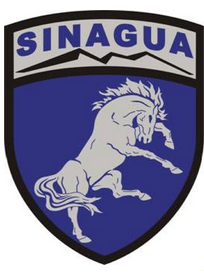In 1933, the Washington Braves NFL football team changed their name to the Washington Redskins. In 2020, facing increasing public pressure over its racially-themed mascot and logo, the team is planning to change their name again and drop the use of "redskins." As a placeholder, they are called the Washington Football team.
What do you think their new team name should be?
How can their new name/image rectify their previous culturally insensitive history?
Does it matter that other professional sports teams have similar names (Kansas City Chiefs, Atlanta Braves) and high schools across the country still use Native American symbols and images?
Video \(\PageIndex{1}\): Video accompanying activities for Building Democracy for All, Topic 6, Standard 1. Uploaded by Umass Democracy for All. YouTube source: www.youtube.com/watch?v=zS5SwKFwbU8.
The Washington football team name is controlled by a private business. The issue of racially insensitive names for state and local governments remains a matter of open policy debate. By the end of 2020 and despite a number of name changes in response to the Black Lives Matter Movement, 26 communities in Massachusetts, the most in New England, still have a Native American mascot at their school.
A bill to prohibit the use of Native American Mascots in public schools has been introduced in the Massachusetts legislature. Multiple states have laws or resolutions prohibiting or limiting Native American mascots in public schools: Maine, Oregon, California, Wisconsin, Minnesota, Washington, New York, New Hampshire, and Michigan (MA Indigenous Legislative Agenda).
There are efforts in other places to address how the names of places reflect the realities of local and state histories. In Minnesota, students, teachers, families, and community members led an effort to change the name of Alexander Ramsey Middle School (Ramsey was a territorial governor in the mid-19th century who forced Native Americans from their homelands) to Alan Page Middle School (Page is the first African American Justice of the Minnesota Supreme Court and was a Hall of Fame football player for the Minnesota Vikings).
What steps do you think state and local governments might take to combat racial/cultural stereotypes and promote fully inclusive histories of indigenous peoples?
How might schools, streets, walkways, parks and other public places be named or renamed to honor those who accomplishments and achievements may be unrecognized or forgotten?
Activity 1: Analyze Native American Mascots and Logos
- Conduct research based on the following prompts:
- What public schools and colleges still have Native American mascots or logos in your region?
- How are Native American mascots and logos used on school websites and social media posts?
- How do national sports team and businesses use Native American imagery and symbols in their marketing?
- Select one Native American logo from a school or sports team to analyze.
- Who designed the logo?
- What is the history of the logo (why is it designed the way it looks)?
- What do the colors and illustrations symbolize?
- What biases or stereotypes does the logo present about Native Americans?
- Do you think Native Americans were consulted during the design of this logo? Why or why not?
- Create a screen recording or interactive image to present your findings.
- Interactive image:
- Start a new Google Drawings canvas.
- Upload the logo image to the middle of the canvas.
- Insert text boxes and shapes to call attention to your findings.
- Add links to additional information (e.g., the original image source).
- Screen recording:
Activity 2: Design a New Logo Honoring Native People's Influence on U.S. Government
- Propose a new logo design for a local or state government committee, department, council, or community youth organization that would honor Native American people and their influence on U.S. government (see Native American Tribal Governments & Native American Influences on U.S Government).
- What features of native culture and life would you include?
- How would your logo combat racial/cultural stereotypes and promote fully inclusive histories of indigenous peoples?
- How would your logo support culturally relevant learning for students and community members?
Sinagua High School JROTC Insignia
Before it was closed in 2010, Sinagua High School in Flagstaff, Arizona were known as the Mustangs. The shoulder sleeve insignia for the school's Junior Reserve Officers' Training Corps (JROTC) featured a mustang in the center with a row of mountains in the background symbolizing the San Francisco Peaks - one of the state's highest landmarks and sacred ground to local indigenous people. In this way, the logo honored Native people along with the school's nickname.

Figure \(\PageIndex{1}\): "Flagstaff Sinagua HSJROTCSSI" | Public domain
Additional Resources
Connecting to the Standards
- Massachusetts Civics & Government Standards
- Compare and contrast the functions of state government and national government. (Massachusetts Curriculum Framework for History and Social Studies) [8.T6.1]
- ISTE Standards
- Knowledge Constructor
- 3a: Students plan and employ effective research strategies to locate information and other resources for their intellectual or creative pursuits.
- 3d: Students build knowledge by actively exploring real-world issues and problems, developing ideas and theories and pursuing answers and solutions.
- Creative Communicator
- 6a: Students choose the appropriate platforms and tools for meeting the desired objectives of their creation or communication.
- 6b: Students create original works or responsibly repurpose or remix digital resources into new creations.
- 6d: Students publish or present content that customizes the message and medium for the intended audiences.
- DLCS Standards
- Collaboration and Communication (DTC.b)
- Research (DTC.c)
- English Language Arts > History/Social Studies Common Core Standards
- CCSS.ELA-LITERACY.RH.6-8.2
- CCSS.ELA-LITERACY.RH.6-8.7
- CCSS.ELA-LITERACY.RH.9-10.2
- CCSS.ELA-LITERACY.RH.11-12.7


